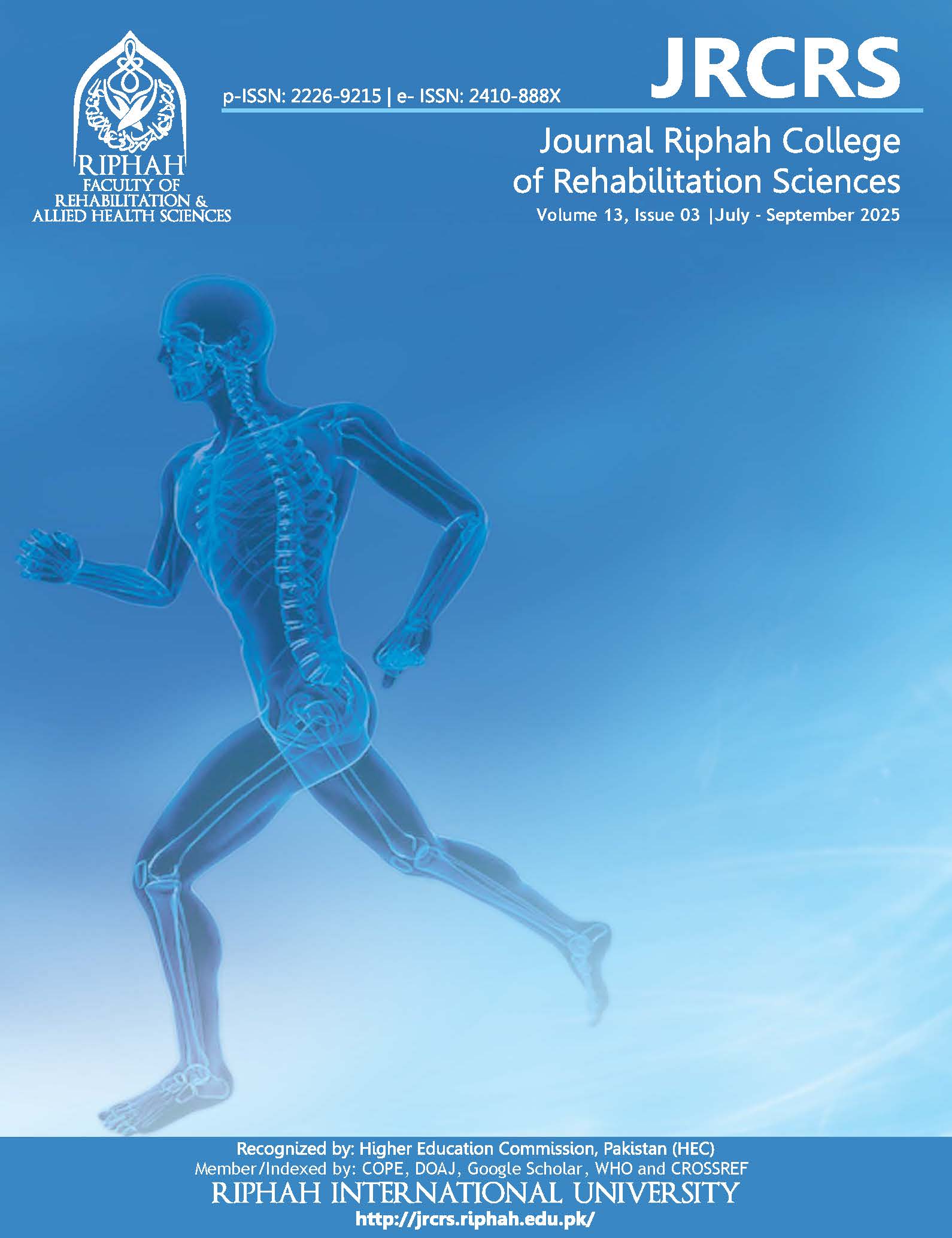Immediate Effects of Taping on Patellofemoral Pain Syndrome in Outpatient Physical Therapy Patients at Rehman Medical Institute, Peshawar – Pre-Post Interventional Study
Abstract
Abstract:
Background: Patellofemoral pain syndrome (PFPS) is one of the most common reasons for the development of knee joint pain usually over the anterior aspect and causes deterioration of the cartilage in between the superiorly lying patella and underneath femur. PFPS contributes to approximately 15-45% of diagnosed cases of knee pain among US population.
Objective: The objectives of this study were to evaluate immediate effects of taping on pain in patients with Patellofemoral Pain Syndrome and to determine the difference in responses according to gender, BMI, and the type of taping technique used.
Methodology: A total of 32 participants were recruited in this pre-post-interventional study. The participants were asked to descend a stair of 8-inch height before and after the application of tape and were asked to rate their pain from 1 to 10 while differences were recorded and analyzed.
Results: The results of the study indicated a statistically significant reduction in pain following the intervention, (p<0.05) with a post-intervention mean value of 3.5±1.7. There was no significant difference between based on the tapping technique. A significant difference between the BMI groups was observed, with individuals with normal BMI responding effectively towards treatment. There was no significant difference between the two gender groups, meaning that both genders respond equally towards treatment.
Conclusion: The results of this study show that short-term taping can significantly reduce knee pain in PFPS via sensory input, with BMI influencing pain relief, while gender and taping technique show no significant impact.
Keywords: Taping, Spider Taping, McConnell’s Taping, Tibial Internal Rotation Taping, Patella Femoral Pain Syndrome
Downloads
Published
How to Cite
Issue
Section
License
Copyright (c) 2025 All Articles are made available under a Creative Commons "Attribution-NonCommercial 4.0 International" license. (https://creativecommons.org/licenses/by-nc/4.0/). Copyrights on any open access article published by Journal Riphah college of Rehabilitation Science (JRCRS) are retained by the author(s). Authors retain the rights of free downloading/unlimited e-print of full text and sharing/disseminating the article without any restriction, by any means; provided the article is correctly cited. JRCRS does not allow commercial use of the articles published. All articles published represent the view of the authors and do not reflect the official policy of JRCRS.

This work is licensed under a Creative Commons Attribution-NonCommercial 4.0 International License.







